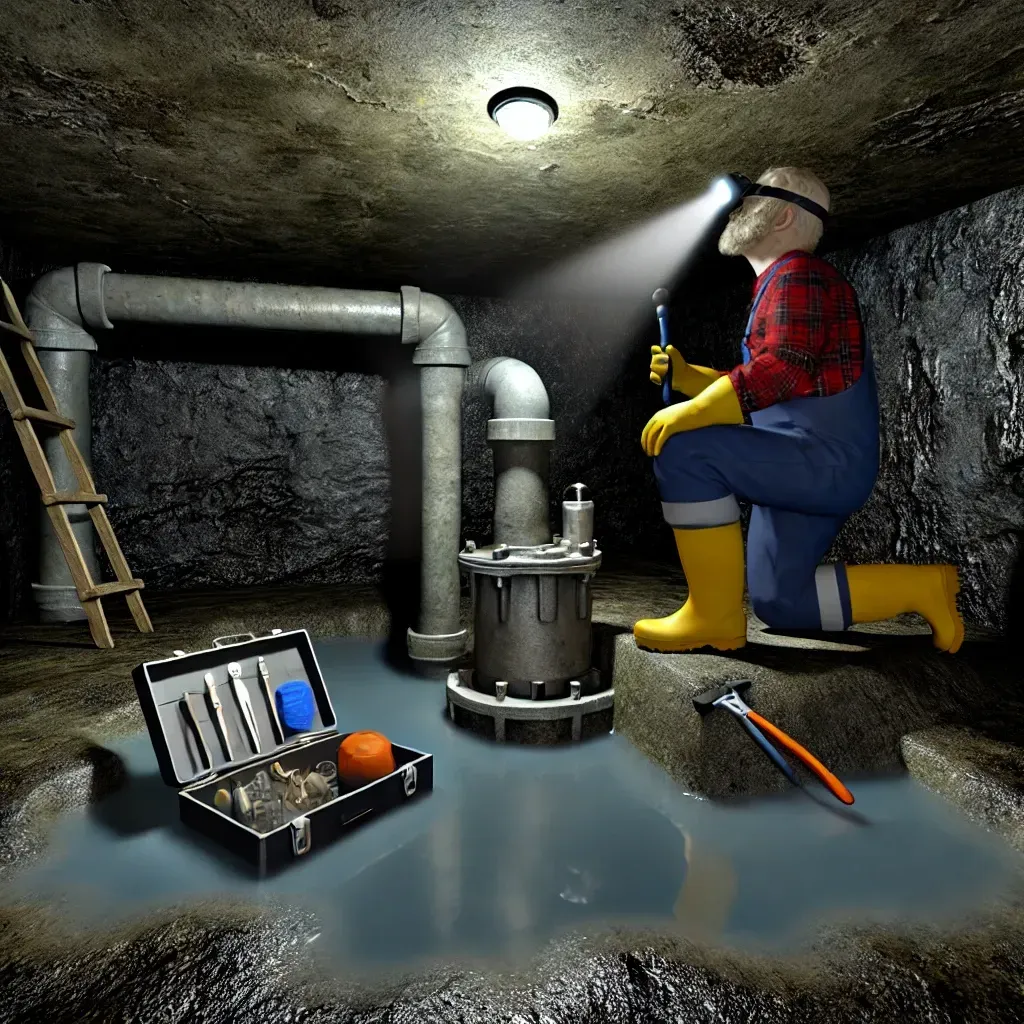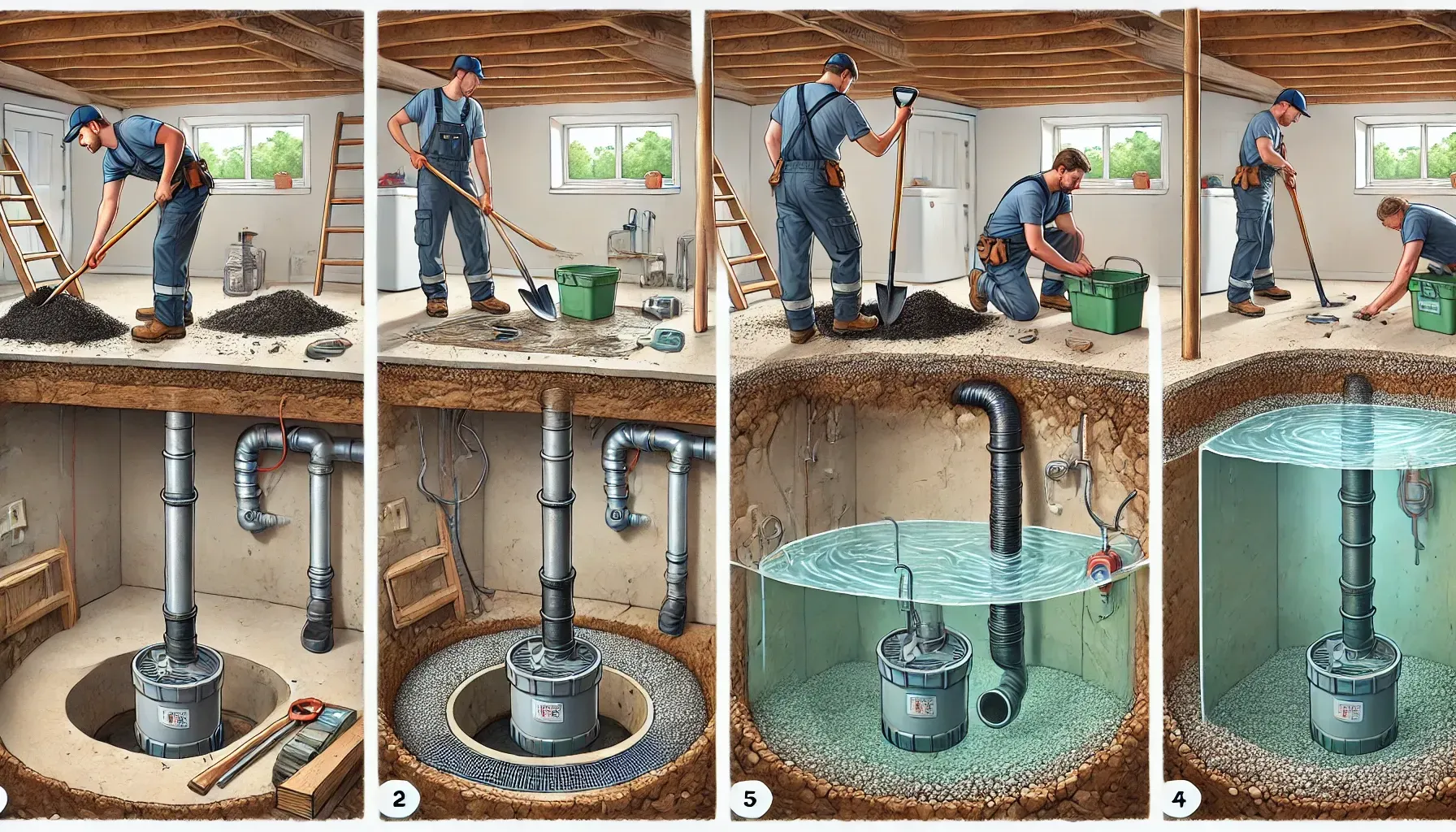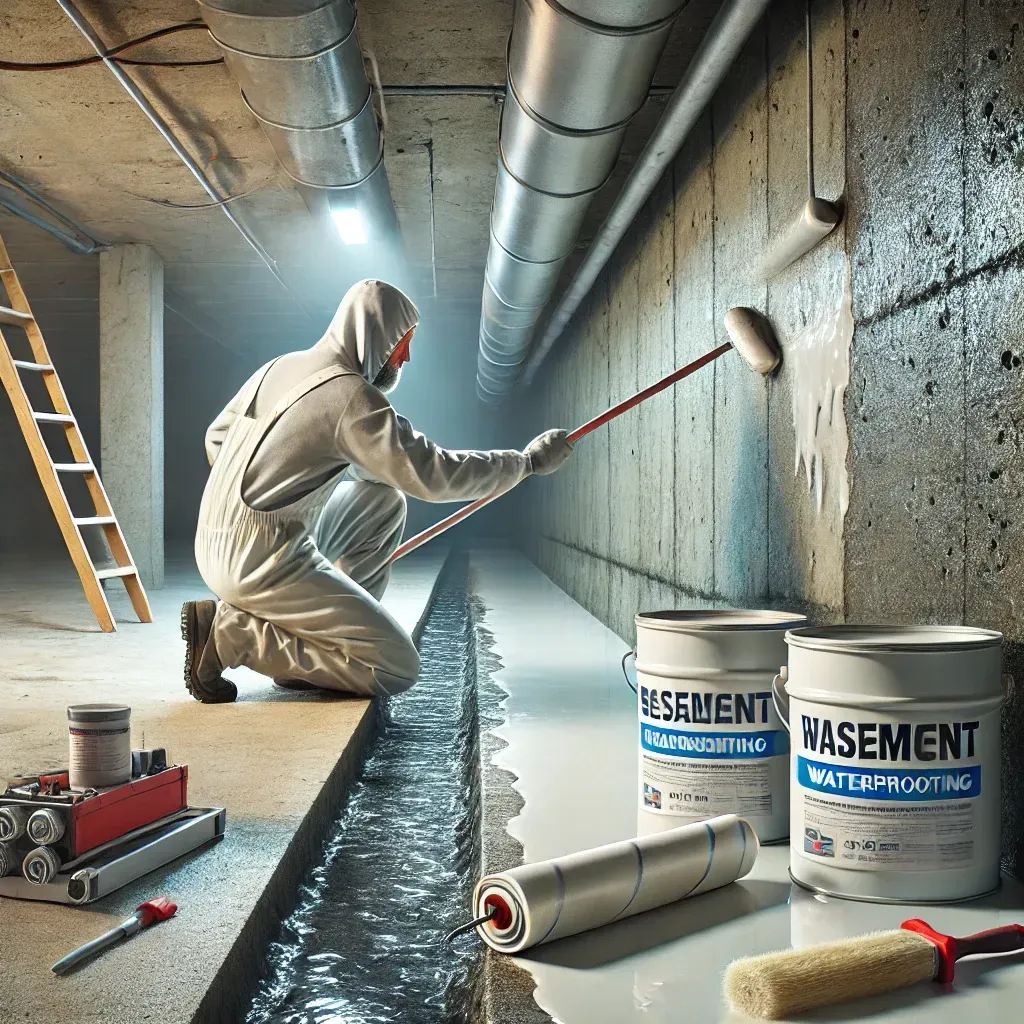Choosing the Right Sump Pump, Installation Guide, Sump Pump Maintenance, Cost of Sump Pump Installation
Keep Your Basement Dry and Secure with Expert Tips on Sump Pump Selection and Care
When it comes to safeguarding your home from water damage, a sump pump is the unsung hero of basement waterproofing. Whether you're a new homeowner curious about "sump pump installation" or a seasoned DIY-er looking to save on "sump pump installation cost," we've got you covered.
From choosing the right system to ensuring proper maintenance, we’ll walk you through every step in a relatable and easy way. Trust us, this is one investment you’ll want to get right, because no one likes a soggy basement.

Why Every Home Needs a Sump Pump (Yes, Even Yours!)
Imagine this: it’s a stormy night in Philly, and you’re curled up with a good book. Meanwhile, the rain outside is pooling around your home’s foundation, ready to make your basement its new home. This is where a sump pump saves the day (and your drywall).
Waterproofing experts agree: a properly installed sump pump is your first line of defense against water infiltration. Here are some surprising stats to back it up:
- 60% of American homes experience some form of basement moisture issues.
- A sump pump can reduce the risk of basement flooding by up to 85%.
- 40% of homeowners who do not have a sump pump report dealing with significant water damage after a storm.
No matter how watertight you think your foundation is, one clogged drain or poorly graded lawn could spell disaster. A sump pump works quietly in the background, ensuring your home stays dry and your peace of mind intact. Plus, for homes in flood-prone areas, insurance premiums could be reduced when a sump pump is part of the basement setup.
Types of Sump Pumps: Finding Your Perfect Match
Not all sump pumps are created equal. Choosing the right one depends on your specific needs and the quirks of your home. Let’s break it down:
A. Pedestal Sump Pumps
Best for: Smaller basements or homes with light flooding.
Pros: Budget-friendly, easy to maintain.
Cons: Louder operation and less durable.
Imagine a lanky, efficient friend who’s good at their job but not great at blending in. That’s a pedestal sump pump for you.
B. Submersible Sump Pumps
Best for: Larger basements or homes with significant water issues.
Pros: Quiet, long-lasting, powerful.
Cons: Pricier and slightly harder to service.
Think of the submersible pump as the James Bond of waterproofing. It stays out of sight but works tirelessly to protect your assets.
C. Battery Backup Sump Pumps
Best for: Homeowners who want extra peace of mind during power outages.
Pros: Operates during blackouts.
Cons: Requires regular battery checks and replacement.
Pro tip: Pair your primary sump pump with a "sump pump battery backup" for added security during Philly’s notorious storms.
D. Water-Powered Sump Pumps
Best for: Homes with access to municipal water systems.
Pros: No battery required.
Cons: Inefficient during droughts or water restrictions.
Did you know that some cities offer rebates for installing water-efficient sump systems? It’s worth checking with your local municipality.
Now that you know your options, let’s move on to the nitty-gritty, installation.
Step-by-Step Guide to Sump Pump Installation

Installing a sump pump might seem intimidating, but with the right tools (and a sprinkle of patience), it’s entirely doable. Here’s how:
Step 1: Assess the Area
Before you break out the tools, figure out where water collects in your basement. This is your sump pit’s future home. Pay attention to signs of water pooling or stains on walls, and choose the lowest point in the basement.
Step 2: Dig the Sump Pit
Tip: Aim for a hole about 18-24 inches deep and 15 inches wide.
Use a sturdy shovel and don’t shy away from getting your hands dirty.
Step 3: Install the Liner
Place a perforated sump liner into the pit and surround it with gravel. This creates a stable base and allows water to filter through.
Extra Tip: Add filter fabric around the liner for additional clog prevention.
Step 4: Set Up the Pump
Place your sump pump inside the liner.
Attach the check valve to the discharge pipe to prevent backflow. (This is crucial!)
Ensure the pump is level and secure to avoid vibrations during operation.
Step 5: Connect the Discharge Line
Run the discharge pipe from the pump to the outside of your home, ensuring it slopes downward. No one wants water pooling right outside their foundation.
Step 6: Test Your Setup
Fill the pit with water and watch your sump pump spring to life. If all goes well, your basement is now flood-proof…or at least as close as it can get.
Fun Fact: Did you know some DIY enthusiasts nickname their pumps? It’s like a rite of passage for bonding with your waterproofing hero.
Sump Pump Maintenance: Keep It Running Like a Champ
Your sump pump is like a car, ignore it, and it’ll break down when you need it most. Regular maintenance ensures longevity and performance. Here’s a handy checklist:
Monthly Checks
- Test the pump by pouring water into the pit.
- Clear any debris from the intake screen.
Quarterly Tune-Ups
- Inspect the power cord and connections.
- Check the discharge line for clogs.
Annual Overhaul
- Flush the entire system to remove sediment buildup.
- Replace the battery in your "sump pump battery backup."
- Inspect the float switch for wear and tear—this small component is crucial for automatic operation.
Pro Tip: Schedule maintenance reminders on your phone. A five-minute check could save you thousands in repair costs.
How Much Does Sump Pump Installation Cost? (Breaking Down the Numbers)
Let’s talk dollars and cents. The cost of installing a sump pump varies based on factors like your location, the type of pump, and whether you hire a pro or go the DIY route. Here’s a rough breakdown:
DIY Installation
- Pedestal Pumps: $150-$300 (materials only).
- Submersible Pumps: $200-$500 (materials only).
Professional Installation
Hiring a contractor for "sump pump installation" ensures a seamless setup but comes at a premium:
- Average Cost in Philly: $1,200-$2,500.
- Extra Costs to Consider
- Battery Backup System: $300-$600.
- Basement Sealing and Waterproofing: $1,000-$10,000 (for added protection).
- French Drain Systems: $5,000-$12,000 (pairs well with sump pumps for ultimate flood protection).
While DIY-ing might save you a few bucks, professional installation guarantees peace of mind, especially if your basement already doubles as a family hangout or home office.
Basement Sealing and Waterproofing: The Ultimate Flood-Proofing Strategy

If you’re serious about keeping your basement dry, sump pumps are only part of the equation. Basement sealing and waterproofing add an extra layer of protection, ensuring water stays where it belongs—outside your home.
Why Seal Your Basement?
- Prevent Structural Damage: Water can erode your foundation over time, leading to costly repairs.
- Improve Indoor Air Quality: A damp basement is a breeding ground for mold and mildew.
- Increase Home Value: A waterproofed basement is a major selling point for potential buyers.
Methods for Sealing and Waterproofing
- Interior Waterproofing: Applying sealants to interior walls and floors to block moisture.
- Exterior Waterproofing: Excavating around your foundation and applying waterproof barriers.
- Drainage Systems: Installing French drains or curtain drains to redirect water away from your home.
- Real-Life Scenario: The Jones family in Philly installed both a sump pump and a French drain system. After a record-breaking storm, their basement stayed completely dry while their neighbors dealt with inches of water. Talk about peace of mind!
Costs of Basement Waterproofing
- DIY Solutions: $300-$800 for interior sealants and minor repairs.
- Professional Services: $5,000-$15,000 for comprehensive exterior waterproofing.
Advanced Sump Pump Features Worth Exploring
If you’re a tech enthusiast or just want the best for your home, modern sump pumps come with advanced features:
Smart Pumps
Connect to your phone or home automation system.
Receive alerts about water levels and pump performance.
Dual Pumps
Two pumps in one pit provide redundancy in case one fails.
Ideal for homes with heavy flooding risks.
High-Capacity Models
Pump water faster and handle larger volumes.
Conclusion: A Dry Basement Is a Happy Basement
A sump pump isn’t just a tool, it’s peace of mind for every homeowner. From selecting the right model to professional installation and regular maintenance, your efforts today ensure that your home remains protected against the unpredictability of water damage. Investing in a sump pump means investing in the safety, longevity, and value of your home. Whether you’re tackling a DIY project or enlisting the pros, remember: a dry basement is a happy basement.
Key Takeaways:
- Sump Pump Selection: Choose the right type of pump based on your home’s needs (pedestal, submersible, battery backup, or water-powered).
- Professional Installation: For guaranteed results, consider professional installation to avoid costly mistakes.
- Regular Maintenance: Monthly checks, quarterly tune-ups, and annual overhauls keep your sump pump in top shape.
- Waterproofing: Combine a sump pump with basement sealing and drainage systems for maximum protection.
- Cost Awareness: Understand the costs of installation and maintenance to make informed decisions.
FAQs
Q: How do I know if I need a sump pump?
A: If your basement experiences frequent dampness, water pooling, or flooding after heavy rains, a sump pump is a worthwhile investment.
Q: How long does a sump pump typically last?
A: With proper maintenance, a sump pump can last 7-10 years. Regularly inspecting and servicing your pump extends its lifespan.
Q: Can I install a sump pump myself?
A: Yes, with the right tools and a bit of know-how. However, for complex setups or peace of mind, hiring a professional is recommended.
Q: What happens during a power outage?
A: Without power, a standard sump pump won’t function. That’s why a battery backup system or water-powered sump pump is a great addition.
Q: How often should I maintain my sump pump?
A: Conduct monthly checks, quarterly tune-ups, and an annual overhaul to ensure reliable operation.
Want to keep your basement bone-dry? Contact Philly Foundation Repair and Waterproofing today for expert advice and industry-leading solutions. We’ve been keeping homes safe since 1913, and we’re just getting started!
Want more info about Sump Pumps? Check out our other blog on "Sump Pumps".

